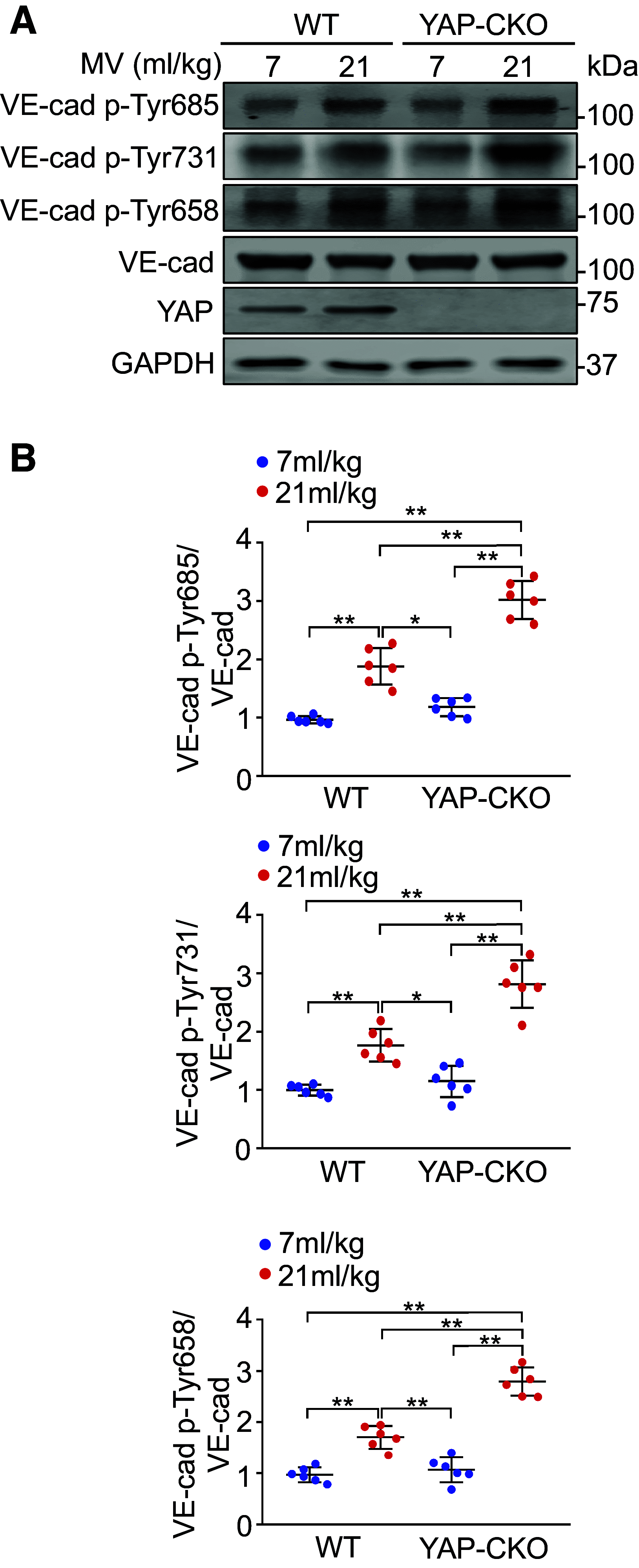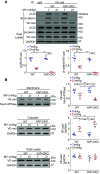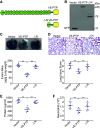YAP expression in endothelial cells prevents ventilator-induced lung injury
- PMID: 33565367
- PMCID: PMC8238153
- DOI: 10.1152/ajplung.00472.2020
YAP expression in endothelial cells prevents ventilator-induced lung injury
Abstract
Ventilator-induced lung injury is associated with an increase in mortality in patients with respiratory dysfunction, although mechanical ventilation is an essential intervention implemented in the intensive care unit. Intrinsic molecular mechanisms for minimizing lung inflammatory injury during mechanical ventilation remain poorly defined. We hypothesize that Yes-associated protein (YAP) expression in endothelial cells protects the lung against ventilator-induced injury. Wild-type and endothelial-specific YAP-deficient mice were subjected to a low (7 mL/kg) or high (21 mL/kg) tidal volume (VT) ventilation for 4 h. Infiltration of inflammatory cells into the lung, vascular permeability, lung histopathology, and the levels of inflammatory cytokines were measured. Here, we showed that mechanical ventilation with high VT upregulated YAP protein expression in pulmonary endothelial cells. Endothelial-specific YAP knockout mice following high VT ventilation exhibited increased neutrophil counts and protein content in bronchoalveolar lavage fluid, Evans blue leakage, and histological lung injury compared with wild-type littermate controls. Deletion of YAP in endothelial cells exaggerated vascular endothelial (VE)-cadherin phosphorylation, downregulation of vascular endothelial protein tyrosine phosphatase (VE-PTP), and dissociation of VE-cadherin and catenins following mechanical ventilation. Importantly, exogenous expression of wild-type VE-PTP in the pulmonary vasculature rescued YAP ablation-induced increases in neutrophil counts and protein content in bronchoalveolar lavage fluid, vascular leakage, and histological lung injury as well as VE-cadherin phosphorylation and dissociation from catenins following ventilation. These data demonstrate that YAP expression in endothelial cells suppresses lung inflammatory response and edema formation by modulating VE-PTP-mediated VE-cadherin phosphorylation and thus plays a protective role in ventilator-induced lung injury.
Keywords: Yes-associated protein; inflammation; vascular endothelial protein tyrosine phosphatase; vascular endothelial-cadherin; ventilator-induced lung injury.
Conflict of interest statement
No conflicts of interest, financial or otherwise, are declared by the authors.
Figures









Similar articles
-
Inhibition of HMGCoA reductase by simvastatin protects mice from injurious mechanical ventilation.Respir Res. 2015 Feb 14;16(1):24. doi: 10.1186/s12931-015-0173-y. Respir Res. 2015. PMID: 25848815 Free PMC article.
-
YAP Controls Endothelial Activation and Vascular Inflammation Through TRAF6.Circ Res. 2018 Jun 22;123(1):43-56. doi: 10.1161/CIRCRESAHA.118.313143. Epub 2018 May 23. Circ Res. 2018. PMID: 29794022 Free PMC article.
-
Activation of Src-dependent Smad3 signaling mediates the neutrophilic inflammation and oxidative stress in hyperoxia-augmented ventilator-induced lung injury.Respir Res. 2015 Sep 16;16(1):112. doi: 10.1186/s12931-015-0275-6. Respir Res. 2015. PMID: 26377087 Free PMC article.
-
Dynamic Regulation of Vascular Permeability by Vascular Endothelial Cadherin-Mediated Endothelial Cell-Cell Junctions.J Nippon Med Sch. 2017;84(4):148-159. doi: 10.1272/jnms.84.148. J Nippon Med Sch. 2017. PMID: 28978894 Review.
-
Small GTPases in mechanosensitive regulation of endothelial barrier.Microvasc Res. 2009 Jan;77(1):46-52. doi: 10.1016/j.mvr.2008.09.006. Epub 2008 Sep 30. Microvasc Res. 2009. PMID: 18938185 Free PMC article. Review.
Cited by
-
Mechanical forces and metabolic changes cooperate to drive cellular memory and endothelial phenotypes.Curr Top Membr. 2021;87:199-253. doi: 10.1016/bs.ctm.2021.07.003. Epub 2021 Sep 25. Curr Top Membr. 2021. PMID: 34696886 Free PMC article. Review.
-
Yes-associated protein induces age-dependent inflammatory signaling in the pulmonary endothelium.Am J Physiol Lung Cell Mol Physiol. 2025 Sep 1;329(3):L315-L322. doi: 10.1152/ajplung.00178.2025. Epub 2025 Jul 24. Am J Physiol Lung Cell Mol Physiol. 2025. PMID: 40707036 Free PMC article.
-
Association between ondansetron use and mortality of patients on mechanical ventilation in the intensive care unit: a retrospective cohort study.Ann Transl Med. 2023 Jan 31;11(2):43. doi: 10.21037/atm-22-6256. Epub 2023 Jan 12. Ann Transl Med. 2023. PMID: 36819561 Free PMC article.
-
Mechanisms of Mechanical Force Induced Pulmonary Vascular Endothelial Hyperpermeability.Front Physiol. 2021 Sep 4;12:714064. doi: 10.3389/fphys.2021.714064. eCollection 2021. Front Physiol. 2021. PMID: 34671268 Free PMC article. Review.
-
YAP/Nrf2 suppresses ferroptosis to alleviate acute lung injury induced by intestinal ischemia/reperfusion.Redox Biol. 2025 Aug 4;86:103811. doi: 10.1016/j.redox.2025.103811. Online ahead of print. Redox Biol. 2025. PMID: 40763655 Free PMC article.
References
-
- Acute Respiratory Distress Syndrome Network, Brower RG, Matthay MA, Morris A, Schoenfeld D, Thompson BT, Wheeler A. Ventilation with lower tidal volumes as compared with traditional tidal volumes for acute lung injury and the acute respiratory distress syndrome. N Engl J Med 342: 1301–1308, 2000. doi:10.1056/nejm200005043421801. - DOI - PubMed
-
- Futier E, Constantin J-M, Paugam-Burtz C, Pascal J, Eurin M, Neuschwander A, Marret E, Beaussier M, Gutton C, Lefrant J-Y, Allaouchiche B, Verzilli D, Leone M, De Jong A, Bazin JE, Pereira B, Jaber S, IMPROVE Study Group. A trial of intraoperative low-tidal-volume ventilation in abdominal surgery. N Engl J Med 369: 428–437, 2013. doi:10.1056/NEJMoa1301082. - DOI - PubMed
-
- Neto AS, Cardoso SO, Manetta JA, Pereira VG, Espósito DC, Pasqualucci MO, Damasceno MC, Schultz MJ. Association between use of lung-protective ventilation with lower tidal volumes and clinical outcomes among patients without acute respiratory distress syndrome: a meta-analysis. JAMA 308: 1651–1659, 2012. doi:10.1001/jama.2012.13730. - DOI - PubMed
Publication types
MeSH terms
Substances
Grants and funding
LinkOut - more resources
Full Text Sources
Other Literature Sources

